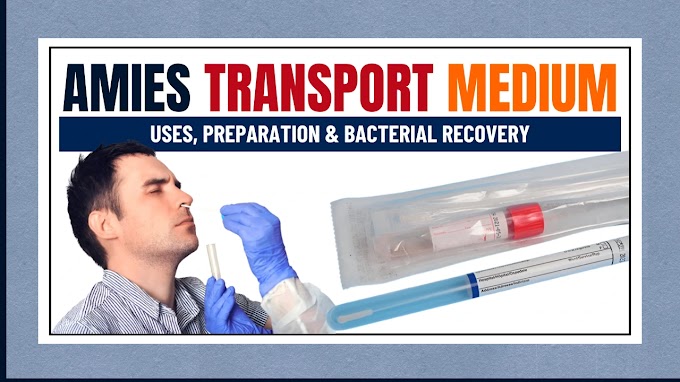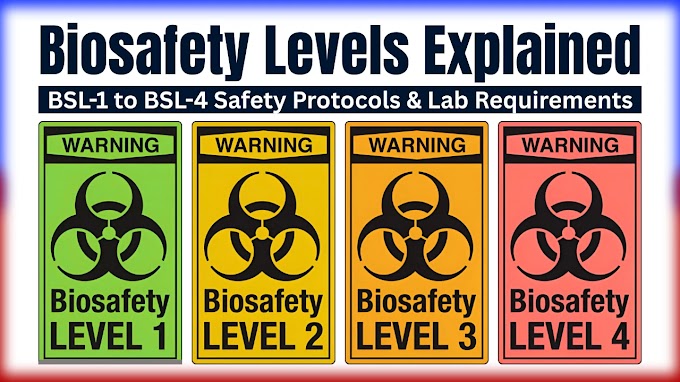Table of Contents
- Introduction to Helicos Single-Molecule Sequencing
- What is Single-Molecule Sequencing?
- Principle of Helicos Single-Molecule Sequencing
- Steps of Helicos Single-Molecule Sequencing
- Advantages of Helicos Single-Molecule Sequencing
- Limitations of Helicos Single-Molecule Sequencing
- Applications of Helicos Single-Molecule Sequencing
- The Fall of Helicos Single-Molecule Sequencing
- References
Introduction to Helicos Single-Molecule Sequencing
Helicos single-molecule sequencing, also known as true single-molecule sequencing (tSMS), is a third-generation DNA sequencing technology that reads individual DNA or RNA molecules directly, bypassing the need for complex steps such as PCR amplification.
This technology was introduced in 2008 by Helicos Biosciences as the first commercial single-molecule sequencing system. It employs sequencing-by-synthesis (SBS) and requires minimal sample preparation.
Unlike traditional next-generation sequencing methods, which involve intricate ligation and amplification steps, Helicos sequencing follows a simplified, amplification-free process. This approach reduces potential biases and errors, resulting in highly accurate sequence data.
Despite its innovative approach, Helicos Biosciences faced financial challenges and filed for bankruptcy in 2012. The company ceased operations, and its original technology is no longer commercially available. However, other companies, such as SeqLL and Direct Genomics, have since acquired and adapted the Helicos sequencing technology.
What is Single-Molecule Sequencing?
- Traditionally, sequencing data relied on amplification-based methods, but single-molecule sequencing, which eliminates the need for amplification, has now become a widely adopted technology.
- Single-molecule sequencing refers to third-generation sequencing methods that utilize simplified sample preparation and directly sequence DNA templates without amplification.
- These methods are categorized into two main approaches: DNA polymerase-based methods and direct detection methods.
- DNA Polymerase-Based Methods: Examples include True Single-Molecule Sequencing (tSMS) by Helicos Biosciences and Single Molecule Real-Time (SMRT) sequencing by Pacific Biosciences.
- Direct Detection Methods: Examples include nanopore sequencing and microscopy-based techniques.
- All single-molecule sequencing technologies employ sequencing-by-synthesis (SBS), utilizing laser excitation to detect fluorescently labeled nucleotides. However, they differ in their fluorescence detection methods, excitation mechanisms, and techniques for immobilizing DNA.
Principle of Helicos Single-Molecule Sequencing
Helicos single-molecule sequencing operates on the principle of sequencing-by-synthesis, enabling the direct sequencing of individual nucleic acid molecules without the need for amplification.
The process begins with genomic DNA fragmentation, followed by denaturation into single strands. These strands are poly-A tailed and hybridized to a glass flow cell surface coated with oligo-dT primers to initiate sequencing. The poly-A tails are filled using dTTP and a polymerase. Fluorescently labeled nucleotides are then added to lock the templates, preventing further extension and preparing them for sequencing reactions.
During the sequencing process, fluorescently labeled virtual terminator nucleotides are incorporated one at a time into the immobilized DNA strands, complementary to the template sequence. Each incorporation is detected using laser-induced fluorescence. The fluorescent label is subsequently removed, and the cycle repeats until the entire DNA fragment is sequenced.
Steps of Helicos Single-Molecule Sequencing
1. Template Preparation
- Genomic DNA is fragmented and denatured into single strands. Shorter DNA templates improve sequencing efficiency by increasing the availability of 3′-hydroxyl ends necessary for sequencing.
- Fragmentation methods include sonication, enzymatic shearing, or the use of restriction enzymes for specific applications.
- Single-stranded DNA (ssDNA) is modified with poly-A tails, enabling binding to the flow cell surface coated with complementary poly(T) primers.
- Terminal transferase is used to add unbiased poly-dA tails to the DNA.
- The 3′ ends of the poly-A-tailed DNA are blocked to prevent interference during sequencing.
- The prepared DNA strands are immobilized onto the glass surface of the sequencing flow cell.
2. Fill and Lock Step
- Polymerase and dTTP are added to fill any remaining complementary nucleotides at the poly-A tail, ensuring unpaired A residues in the template are not sequenced.
- Templates are locked for sequencing by incorporating fluorescently labeled terminator nucleotides, ensuring they are ready for sequencing.
3. Sequencing-by-Synthesis (SBS)
- Sequencing begins after the fill and lock step.
- Fluorescently labeled virtual terminator nucleotides are sequentially incorporated into the growing DNA strand by DNA polymerase, complementary to the template sequence.
- The flow cell is illuminated with a laser to excite the fluorescent labels, and the emitted signals are captured by a CCD camera, recording the positions of all labeled molecules.
- After each nucleotide incorporation, the fluorescent dyes and terminator groups are cleaved, allowing the cycle to repeat for subsequent nucleotide additions.
4. Data Analysis
- Images captured during sequencing are processed to extract nucleotide sequence information for each strand.
- Base-calling algorithms interpret the fluorescent signals and translate them into nucleotide sequences.
- The sequence data undergo downstream analysis, including alignment to a reference genome and detection of genetic variants.
Advantages of Helicos Single-Molecule Sequencing
- Direct Sequencing: Helicos SMS eliminates the need for amplification, preserving the integrity of the original DNA and RNA sequences.
- Bias Reduction: It minimizes biases associated with GC content and molecule size, enabling the direct sequencing of degraded or modified nucleic acids.
- Streamlined Process: The direct hybridization of nucleic acids to a flow cell reduces sample loss and processing bias.
- Low Input Requirements: It requires minimal starting material, making it ideal for rare or limited samples.
Limitations of Helicos Single-Molecule Sequencing
Short Read Lengths: The technology generates short reads, which pose challenges for assembling complex genomes.
High Data Output: Each run produces vast amounts of data, requiring significant computational resources for storage and analysis.
High Costs: The expensive equipment, operational costs, and sophisticated imaging systems made Helicos SMS less accessible.
Infrastructure Requirements: The Heliscope machine required a stable environment with heavy infrastructure, such as granite bases, to reduce vibrations and ensure precise sequencing.
Accuracy Issues: Background noise during imaging could affect accuracy, particularly in complex regions and homopolymer sequences.
Limited Throughput: The technology lagged behind competitors like Illumina in terms of sequencing throughput.
Inconsistent Quality: Variability between runs made the system less reliable for research and clinical applications.
Applications of Helicos Single-Molecule Sequencing
- Helicos Single-Molecule Sequencing (SMS) enables RNA sequencing by directly sequencing RNA without the need for reverse transcription into cDNA, making it valuable for transcriptomic studies that include both coding and non-coding RNAs.
- It supports ChIP-seq by sequencing DNA fragments associated with specific proteins or epigenetic modifications, providing insights into regulatory and epigenetic processes.
- The technology is well-suited for copy number variation (CNV) analysis.
- It allows accurate detection of genetic variants and is beneficial for large-scale genomic studies, particularly in cancer research to identify rare mutations.
- Helicos SMS is effective for studying genomes with high GC content, offering accurate representation compared to amplification-based methods.
- It is ideal for sequencing degraded or low-input DNA samples, such as ancient or forensic specimens.
The Fall of Helicos Single-Molecule Sequencing
- Helicos Biosciences, despite being the pioneer in commercial single-molecule sequencing, encountered significant technical and financial hurdles that led to its downfall.
- The Heliscope instrument, introduced in 2008, featured groundbreaking technology that eliminated DNA amplification and reduced errors. However, the system was hindered by high initial and operational costs, short read lengths, elevated error rates, sensitivity to environmental conditions, and limited scalability.
- By the time Helicos entered the market, competitors like Illumina had already established dominance. Illumina’s platforms offered longer read lengths, faster processing times, and significantly lower costs, making it challenging for Helicos to compete.
- Helicos ceased operations in 2011 after selling only a few units worldwide.
- Despite its commercial failure, Helicos laid the groundwork for advancements in single-molecule sequencing, inspiring technologies like PacBio sequencing and Oxford Nanopore sequencing.
- After bankruptcy, Helicos’ patents were acquired by Direct Genomics, a company founded by Jiankui He, who became infamous for creating the first germline genome-edited babies. While Direct Genomics explored single-molecule sequencing for specific applications, its progress was limited, and the company faced controversies associated with its founder.
- The technology has since been adapted by SeqLL for niche applications, particularly in targeted RNA sequencing.
References
- Blow, N. (2008). DNA sequencing: generation next-next. Nature Methods, 5(3), 267–274. https://doi.org/10.1038/nmeth0308-267
- Hart, C., Lipson, D., Ozsolak, F., Raz, T., Steinmann, K., Thompson, J., & Milos, P. M. (2010). Single-molecule sequencing. In Single Molecule Tools: Fluorescence-Based Approaches, Part A (pp. 407–430). Methods in Enzymology. https://doi.org/10.1016/s0076-6879(10)72002-4
- Krol, A. (2015, October 29). Direct Genomics’ new clinical sequencer revives a forgotten DNA technology. Bio-IT World. Retrieved from https://www.bio-itworld.com/news/2015/10/29/direct-genomics-new-clinical-sequencer-revives-a-forgotten-dna-technology
- Milos, P. M. (2010). Helicos single molecule sequencing: Unique capabilities and importance for molecular diagnostics. Genome Biology, 11(Suppl 1), I14. https://doi.org/10.1186/gb-2010-11-s1-i14
- SEQLL – True Single Molecule Sequencing. (n.d.). Retrieved from https://seqll.com/
- Singer, E. (2008, June 23). Sequencing a single molecule of DNA. MIT Technology Review. Retrieved from https://www.technologyreview.com
- Thompson, J. F., & Milos, P. M. (2011). The properties and applications of single-molecule DNA sequencing. Genome Biology, 12(2). https://doi.org/10.1186/gb-2011-12-2-217
- Thompson, J. F., & Steinmann, K. E. (2010). Single molecule sequencing with a HeliScope genetic analysis system. Current Protocols in Molecular Biology, 92(1). https://doi.org/10.1002/0471142727.mb0710s92
- Yuzuki, D. (2012, June 25). Helicos single molecule sequencing – A pioneer. Next Generation Technologist. Retrieved from https://yuzuki.org/helicos-single-molecule-sequencing-a-pioneer/
- Yuzuki, D. (2023, September 4). Observations about Helicos, a single molecule sequencer from 2008. Silent Valley Consulting | Life Science. Retrieved from https://silentvalleyconsulting.com/blog/observations-about-helicos-a-single-molecule-sequencer-from-2008/





~1.webp)

.webp)


